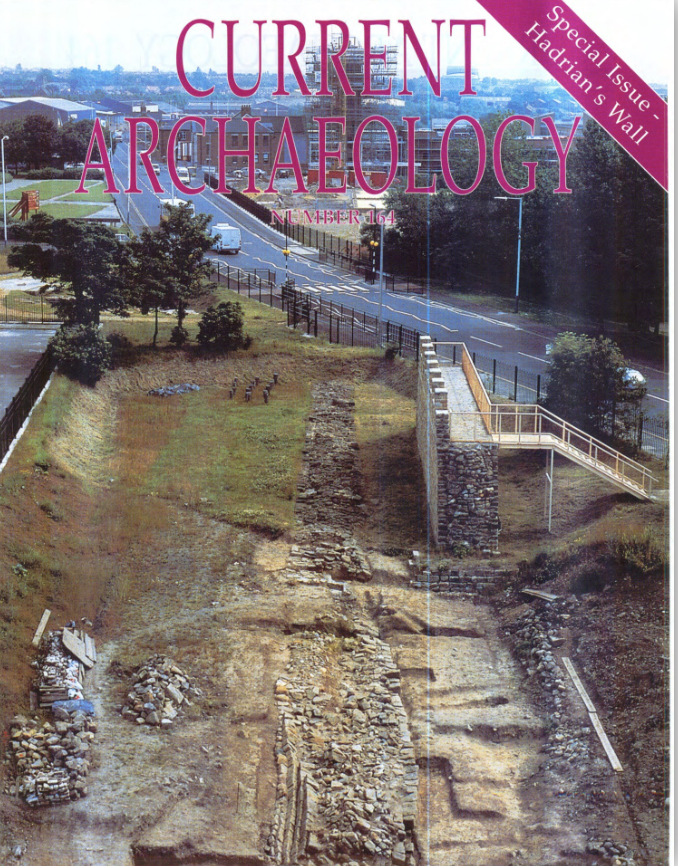What has been happening on Hadrian’s Wall? Since 1849 a Pilgrimage of the Wall has taken place every ten years and as with previous Pilgrimages, (CA 15,116) this special issue of Current Archaeology is devoted to Hadrian’s Wall.
At the eastern end of the Wall, two of the major research excavations in British archaeology are underway. South Shields has long been known as a supply depot for the eastern side of the Wall and since 1977 excavations have been taking place almost every year. The western gateway has been rebuilt, then the luxury house of the fort commander was uncovered, – see CA133 – but what happened to the fort at the end of the third century?
The end of the Wall is appropriately enough at Wallsend, long buried beneath the most successful shipyard of the late Victorian age. As the shipyard decayed the fort has been rediscovered and now a £5 million millennium project has been launched to attract tourists to a suburb of Newcastle that is otherwise somewhat unvisited. In the course of the work, much of the fort has been excavated and a new solution is offered to that perennial problem, where did they keep the horses in cavalry forts?
One of the loneliest postings in the Roman army must have been at High Rochester, an outpost fort 20 miles on the wrong side of Hadrian’s Wall. What was life like in such an isolated position?
In our last Pilgrimage issue – CA116 – a major revelation was the excavations of the fort at Birdoswald and the discovery of a Dark Age hall in the ruins of the Roman granaries. What has been happening since? The old farmhouse has now been converted into a study centre and a new geophysical survey has revealed the layout of the fort and much else besides.
Carlisle, just behind the Wall, is a problem. It began as a fort, then became a supply base and ended up as a town, possibly a civitas capital.
But where were its limits? Recent excavations at Botchergate have suggested that it was much more extensive then previously recognised, while excavations in advance of a Millennium project are revealing new secrets of the Roman fort.
This issue is edited by Paul Bidwell, Head of Archaeology for the Tyne and Wear Museums, and Director (and instigator) of the excavations at South Shields and Wallsend. As part of our plans to develop Current Archaeology, we intend to have ‘issue editors’ for a number of issues in the future, and as Paul is the editor of the Pilgrimage Handbook, he was the obvious choice for our first ‘issue editor’. This is the start of a major new development, as Current Archaeology moves ahead into the new millennium.

